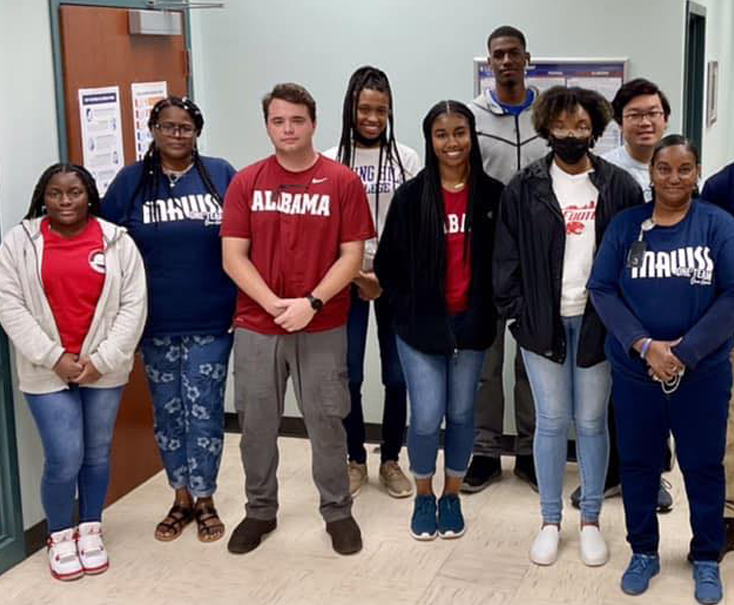The Mobile Water & Sewer System
The Mobile Water Service System came into being on October 1, 1952, when the Board of Water and Sewer Commissioners entered into a contract with the City of Mobile to purchase the water and sanitary sewer systems on behalf of the city. Raw water was purchased from the City Water Works Board from 1952 to 1968. The two Boards were merged on January 1, 1968, with the Board of Water and Sewer Commissioners taking over the raw water system.
Today, water is delivered from the 3,600-acre lake and pumping station by pipes to two reservoirs where it is diverted either to domestic or industrial use. The reservoirs are at an elevation of 220 feet and industrial water is delivered by gravity to industry at an elevation of about 25 feet. Pumps at Big Creek Lake provide treated water to Mobile and untreated water to local industries.
Historical Facts of Note
- In Mobile's first water system, some of the lines consisted of cast-iron but the majority were bored-out pine logs
- In 1819, a public well was installed at the intersection of Dauphin and Royal streets at what is now Bienville Square, Mobile's first sewer was installed in Conti Street in 1868, at the time the old Gulf City Hotel, later known as the Southern Hotel, was erected at the southeast corner of Conti and Water streets
- In 1900, a City-owned system was put into operation, with a pumping station on Three Mile Creek at the east end of what is now City park property and the reservoir, still in use, atop Spring Hill
- The Bienville and the City systems operated as virtually parallel, but separate systems until January 8, 1907, when the city acquired the Bienville holdings for $350,000
In 1814, the Portage on Bayou Chotage (Three Mile Creek) was the important source of water supply for the City of Mobile. Also, it is believed that some residences may have had individually dug wells on their properties so that several sources of potable water were available.
In 1819, a public well was installed at the intersection of Dauphin and Royal streets at what is now Bienville Square.
In 1820, the State legislature authorized the formation of a corporation known as "The Mobile Aqueduct Company." The corporation should "have and enjoy the exclusive right and privilege of conducting and bringing water for the supply of said City for a period of 40 years." At the expiration the works were to become the property of the City.
The corporation failed to construct the water works. In 1830 a committee was appointed by the City officials to determine the feasibility of bringing water into the City.
On December 12, 1830, articles of agreement by the City of Mobile indicated that they would on or before the first day of January 1832, construct an aqueduct for the introduction of water into the city from a spring near the late country residence of Judge Lipscomb at Spring Hill.
On December 1, 1836, the City of Mobile leased the water works to Henry Hitchcock and he was given a franchise to provide water for a period of 20 years.
On December 25, 1837, the State legislature incorporated the Mobile Aqueduct Company and, as a result, Hitchcock in 1838 surrendered the water works and all appurtenances to the City of Mobile.
It was 1840 before the City met with any success with its public water-crude system. On December 26, 1840, the City of Mobile entered into a contract with Albert Stein which, in effect, gave him a franchise to supply the City with water for 20 years.
On January 7, 1841, the agreement between the City of Mobile and Albert Stein was confirmed by the State legislature.
The pump site at Spring Hill was about 7 miles west of the downtown area whereas the tank site was about 2 miles from town. From the elevated tank, a system of lines extended throughout the City. Some of the lines consisted of cast-iron but the majority were bored-out pine logs. The log pipes that were used in the system were heart pine. This was Mobile's only public water system until 1886.
Mobile's first sewer was installed in Conti Street in 1868, at the time the old Gulf City Hotel, later known as the Southern Hotel, was erected at the southeast corner of Conti and Water streets. In 1889 the City granted a franchise to the Conti Street Sewer Company for construction of a sewer line in Conti Street. This line, with laterals into several side streets, served the immediate downtown area. About 10 years after the sewer was installed, the City acquired it in May, 1899, and it became a part of the general sewer system.
On April 9, 1886, the Bienville Water Supply Company was organized with Dr. George A. Ketcham as its president. This company constructed a pumping plant on Clear Creek off Moffett Road and a reservoir, still in use, on Moffett Road.
A cast-iron pipe was installed into the heart of the City with necessary distribution lines into the business district and residential areas in 1887. Mobile, for the first time in its 175-year history; had a water supply system that approached adequacy.
Albert Stein died in 1874, but the water system continued to operate in his name and separate from the Bienville Water Supply Company until 1898. Because neither the Stein nor the Bienville companies were able to extend their distribution lines to meet the demand of the expanding population, in 1898, after some litigation, the City acquired the properties and water-rights of the Stein interests, and decided to construct a public-owned supply. In 1900, the City system was put into operation. The pumping station was on Three Mile Creek at the east end of what is now City park property and the reservoir, still in use, was atop Spring Hill near the small elevated tank. On July 1, 1901, the operation of the old Stein plant was discontinued. Most of the cast-iron distribution system of the old plant was removed and either re-laid or sold.
By 1904, so many connections to the new City Works had been made that the supply in Three Mile Creek at the Spring Hill pumping station was insufficient to furnish the required water. An auxiliary pumping plant was installed on the site of the old Stein plant. This auxiliary plant was put into operation on October 2, 1905.
The Bienville and the City systems, after the abandonment of the Stein system, operated as virtually parallel, but separate systems until January 8, 1907, when the city acquired the Bienville holdings for $350,000. Since that time the two systems have been interconnected and operated as one.
During the period from 1907 to 1940, the city kept pace with providing water service for the population growth until the outbreak of World War II when it became increasingly apparent that the existing sources of supply were inadequate and undependable. A new source was necessary not only because of lack of sufficient quantity, but because the water sheds of Clear and Three Mile Creeks were becoming more urbanized and the quality of the supply was endangered. The source of supply recommended by the Mobile Water Works to the City and Planning Commissions was Big Creek, in the western part of Mobile County. The Big Creek project was placed in service in 1952 at a cost of about $7,000,000 including land, dams, pumphouse, reservoir and pipelines. Construction required two years.
Water is delivered from the 3,600-acre lake and pumping station by pipes to two reservoirs where it is diverted either to domestic or industrial use. The reservoirs are at an elevation of 220 feet and industrial water is delivered by gravity to industry at an elevation of about 25 feet. The industrial water line extends from the filter plant northward about 7 miles to the industrial sites at Magazine Point. Pumps at Big Creek Lake provide treated water to Mobile and untreated water to local industries such as chemical plants and paper mills.
Raw water from Big Creek Lake is prechlorinated prior to coagulation with aluminum sulfate and lime to remove sediments and organic matter, brown color, and turbidity. After settling of precipitants in sedimentation basins, the water is passed through a sand filter and gravel. The water undergoes secondary lime treatment to adjust the pH.
Post-chemical treatment consists of fluoridation whereby fluoride as sodium silicofluoride is added after filtration because fluoride can be removed by the lime-softening and alum-coagulation processes.
On September 18, 1952, the State legislature enacted "The Enabling Act" which empowered a municipality to create an entity with powers to acquire, purchase, maintain and operate a water system or any part thereof. So that money could be raised from issuance of bonds to update the existing water system, the Board of Water and Sewer Commissioners was created. The Board entered into a contract with the City of Mobile on October 1, 1952, whereby the Board agreed to purchase the water and sanitary sewer systems on behalf of the city.
The Mobile Water Service System, comprised of the finished water-supply and the sanitary-sewer systems, is publicly owned and is operated by the Board under a deed of trust from the City. This Board consists of seven members that are appointed by the City Council. Raw water was purchased from the City Water Works Board from 1952 to 1968, an entity which was established prior to the creation of the Board of Water and Sewer Commissioners. The two Boards were merged on January 1, 1968, with the Board of Water and Sewer Commissioners taking over the raw water system.
Another source of water was needed to provide industries along Mobile River with untreated water.
*Information obtained from "The Geological Survey of Alabama, Circular 92," by Joseph F. Riccio and Conrad A. Gazzier, Univ. of Al, 1973.



